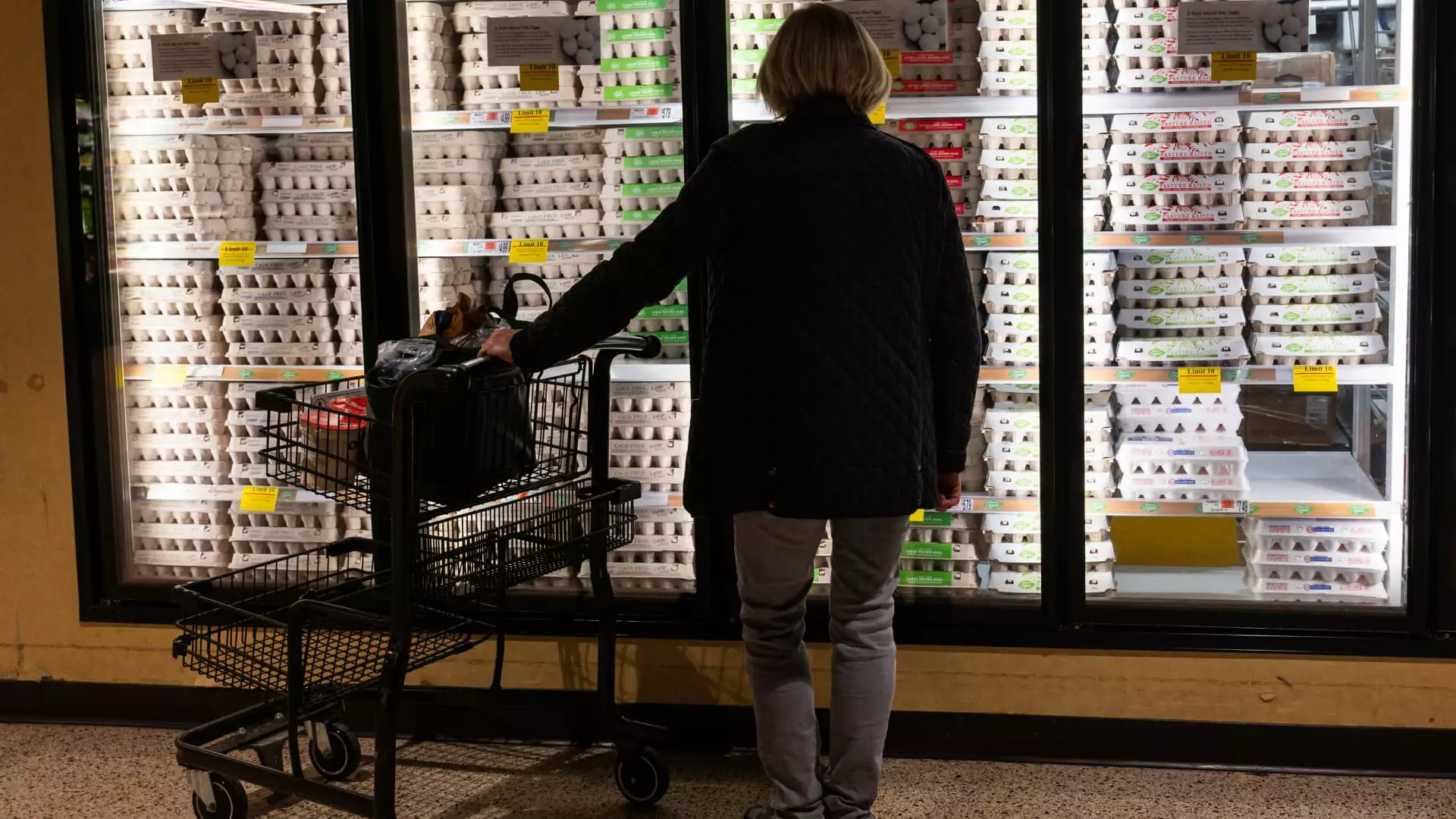In an unexpected turn of events, wholesale egg prices have seen a dramatic nosedive, dropping by 44% to $4.83 per dozen. This change has emerged after a troubling spike that saw prices peak at $8.58 per dozen in February. For many consumers, this sudden plummet offers a glimmer of relief in a market that had left them feeling financially rattled. However, the complexities surrounding the reasons for this fall challenge our understanding of how grocery markets operate. The dip in prices, primarily attributed to easing bird flu outbreaks and waning consumer demand, casts a shadow on the long-lasting impacts of the previous hikes.
The Hidden Consequences of Bird Flu
The bird flu outbreaks that decimated countless egg-laying chickens are often cited as the primary villain behind the steep price increases of earlier this year. While it’s comforting to entertain the notion that supply chains might stabilize, we cannot overlook the fact that such incidents expose fundamental vulnerabilities within our agricultural systems. The temporary tapering of avian flu should not be treated as an all-clear signal. Instead, we ought to question why our food supply, especially something as essential as eggs, remains so jeopardized by a single virus. As much as we want prices to drop, the inherent lack of resilience in the egg production sector poses troubling questions about food security and market stability.
The Role of Consumer Behavior
Interestingly, consumers have altered their purchasing patterns in response to the past price increases. As panic overcame many households, stockpiling became a common practice reminiscent of the frantic rush for toilet paper during the early days of the pandemic. Now, as prices begin to retreat, these very same consumers find themselves in a paradoxical position: they have enough eggs stocked away but remain hesitant to resume normal consumption levels. This reluctance has inadvertently contributed to a further easing of supply shortages. In this context, consumer behavior plays a pivotal role that is often undervalued in discussions surrounding market dynamics. Rather than simply being passive responders to price fluctuations, consumers are active players whose choices significantly shape the marketplace.
The Waiting Game: Lag Between Wholesale and Retail Prices
One complicating factor when evaluating egg prices is the inherent lag between wholesale price changes and retail adjustments. Consumers still find themselves grappling with old prices even as the market dynamically shifts. This disillusionment creates a disconnect that can lead to further frustrations, especially for those who may mistakenly believe that retailers are hoarding profit margins rather than responding swiftly to the market. As Karyn Rispoli indicates, many consumers will still feel the pinch of past price peaks when they head to the store, complicating the narrative around what should be a celebratory decline.
The Shadow of Antitrust Investigations
Compounding the unsettling picture is the ongoing antitrust investigation by the U.S. Department of Justice into the major egg producers. While the focus may be on competitive practices, one must ask whether this scrutiny will lead to appreciable change in how prices are dictated in the future. The reality is that high prices have not only inflicted strain on everyday Americans but have also raised fundamental questions about market integrity. Moreover, the looming possibility of legal repercussions creates an uncertain atmosphere in an industry that is grappling with both natural and economic pressures.
A Fragile Outlook as Holidays Approach
As Easter approaches, the demand for eggs will inevitably rise. This seasonal spike may counteract the current deflationary trends in pricing, fostering a volatile market that could swing back toward higher prices. Kevin Bergquist’s insights suggest egg prices will remain “highly variable,” implying that the existing relief may be short-lived. Such volatility not only complicates budgeting for families but also raises alarm bells regarding the long-term viability of egg prices as we navigate fluctuating economic conditions.
When analyzing the recent shifts in egg prices, one cannot help but feel disheartened by the overarching circumstances that led us to this moment. Instead of viewing price stabilization as a chance to breathe easy, it serves as a sobering reminder of our precarious reliance on systems that can tip at a moment’s notice. The path forward necessitates a carefully calibrated approach, one that prioritizes resilience and sustainability over short-lived relief.

